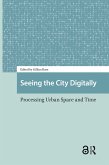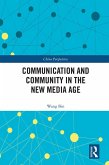Traditionally, urban sociology research has assumed that people seek to filter urban stimuli, but recent accounts of public screens suggest producers design and position display interfaces site-specifically, so as to engage with those moving past. This study offers insight both into the dynamics of actual encounters and into the long-term process of how people learn to live with repeated invitations to consume media in public spaces. The book includes four cases: street advertising, underground transport advertising, and installation art in London (UK) and media façade architecture in Zadar (Croatia). Krajina shows that maintaining familiarity with everyday surroundings in media cities that change beyond citizens' control is a temporary achievement--and a recursive struggle.
Finalist for the Jane Jacobs Urban Communication Foundation book award, 2014
Dieser Download kann aus rechtlichen Gründen nur mit Rechnungsadresse in A, B, BG, CY, CZ, D, DK, EW, E, FIN, F, GR, HR, H, IRL, I, LT, L, LR, M, NL, PL, P, R, S, SLO, SK ausgeliefert werden.









